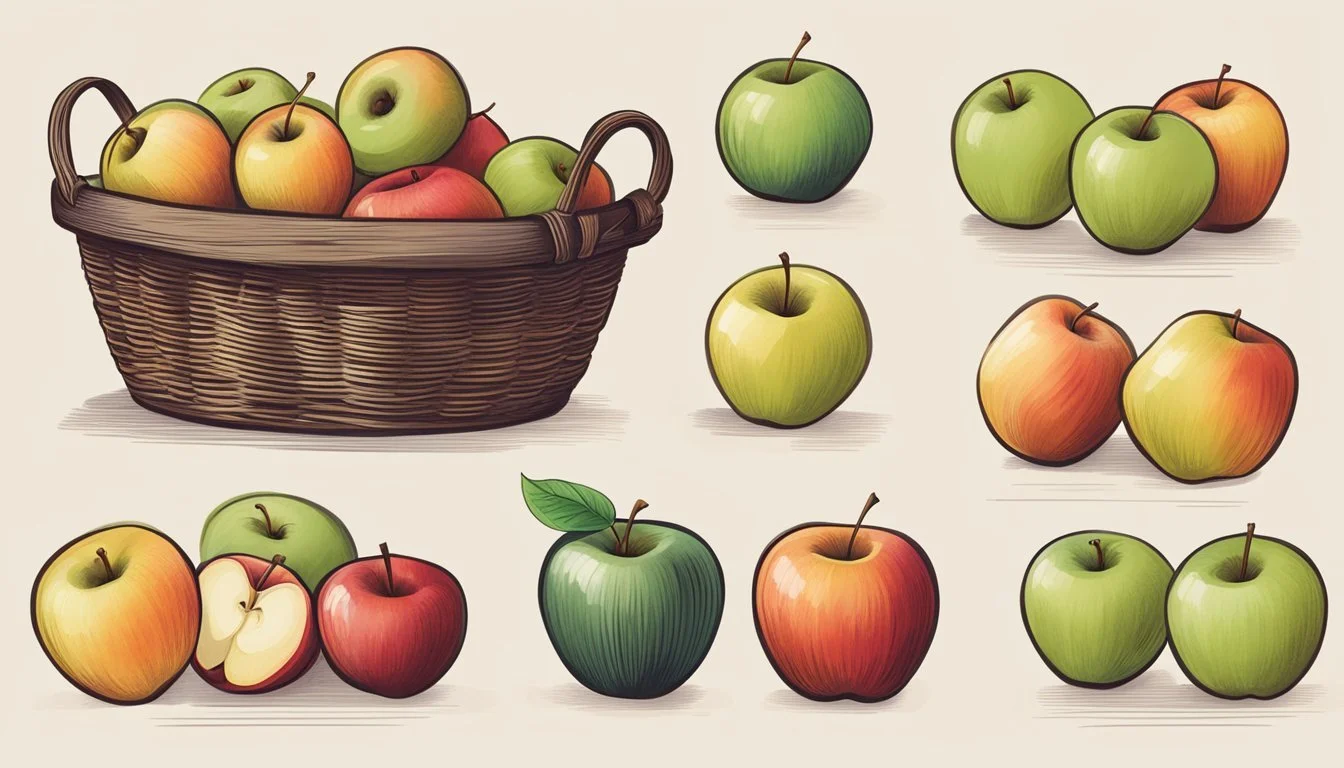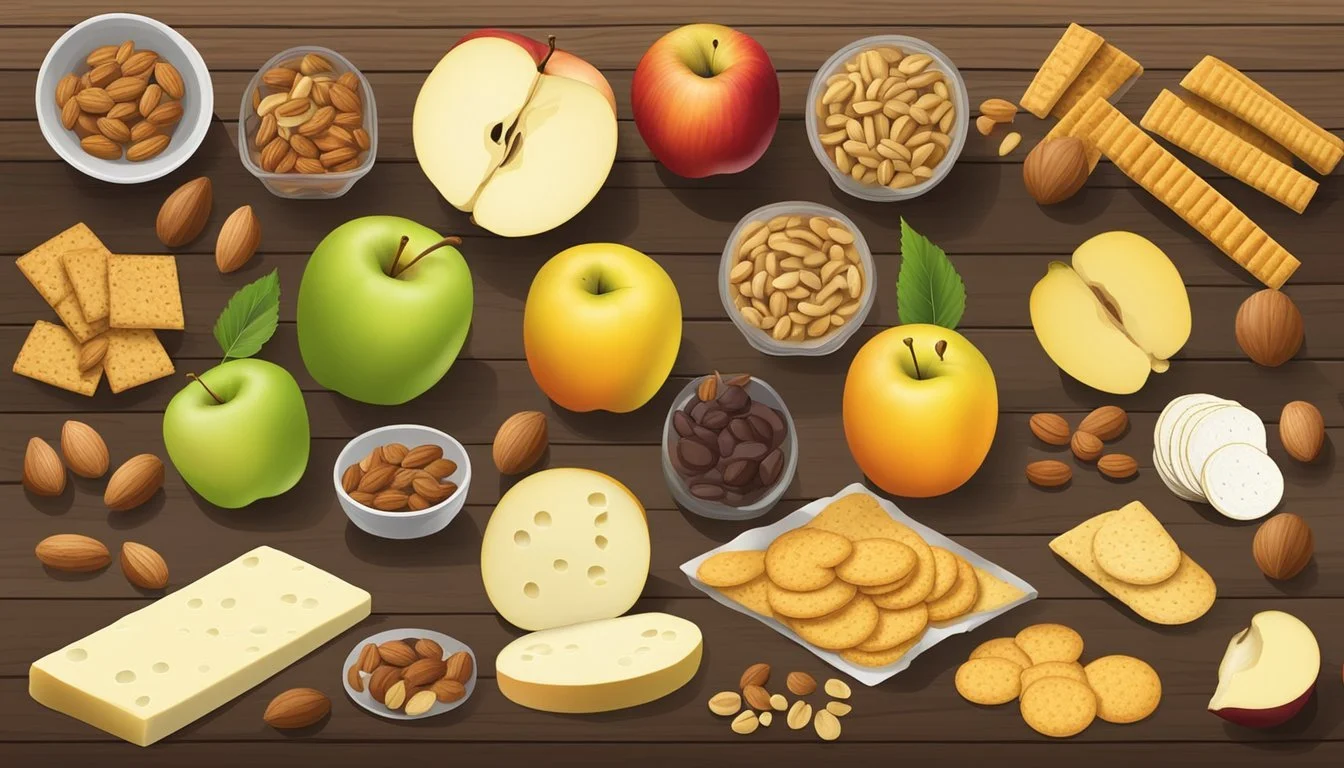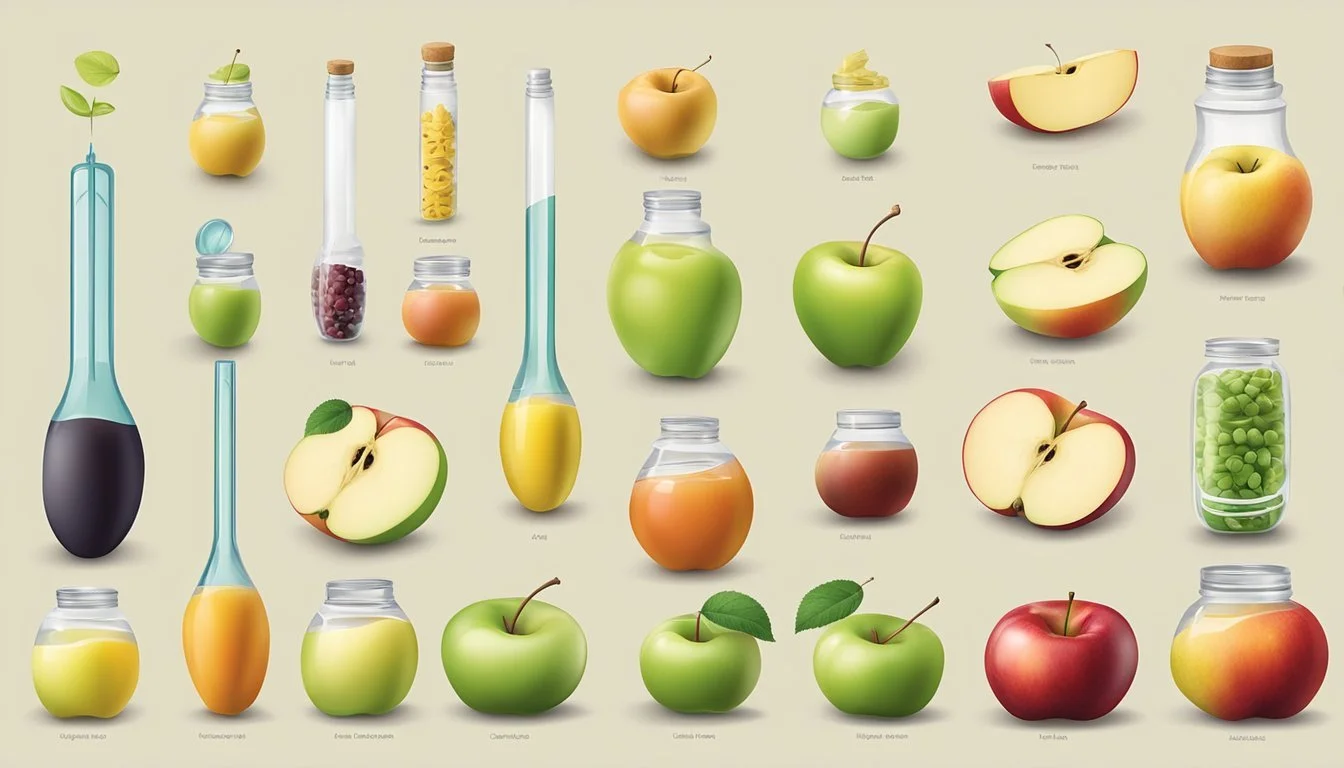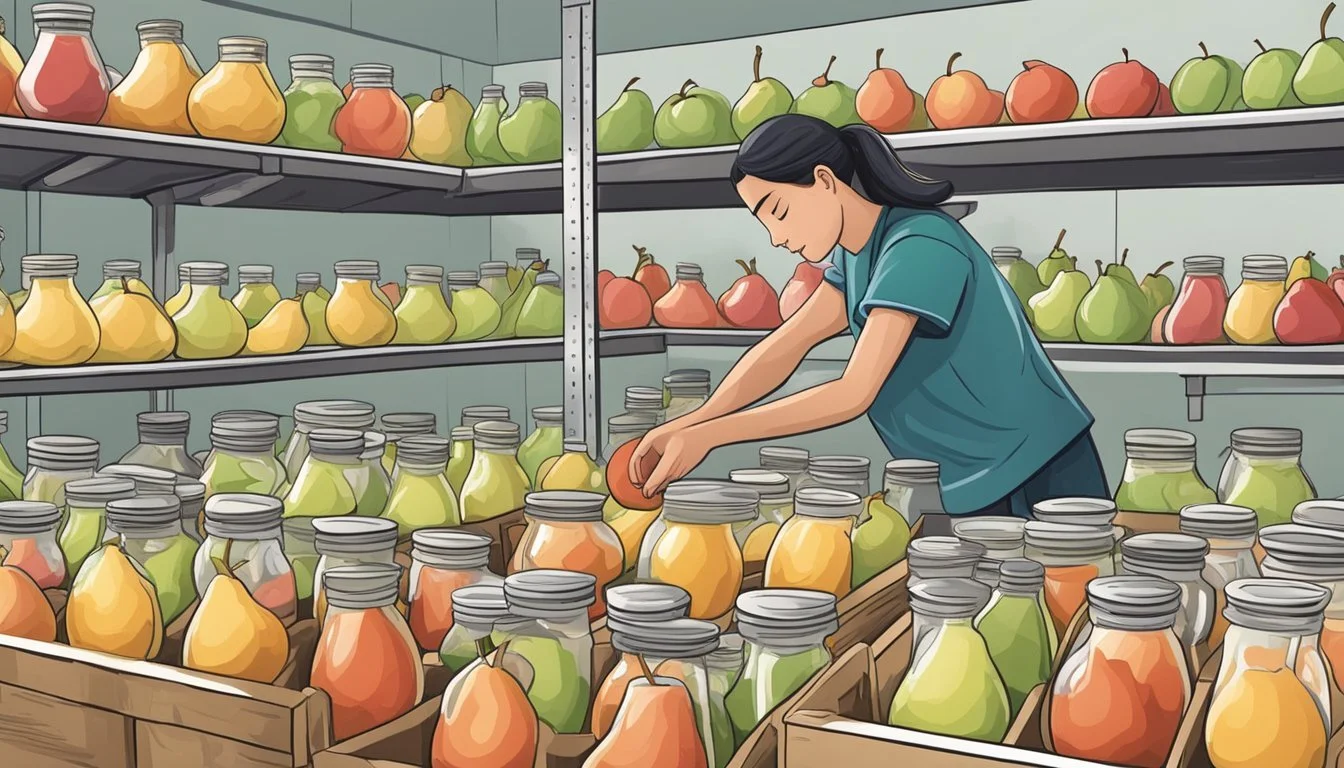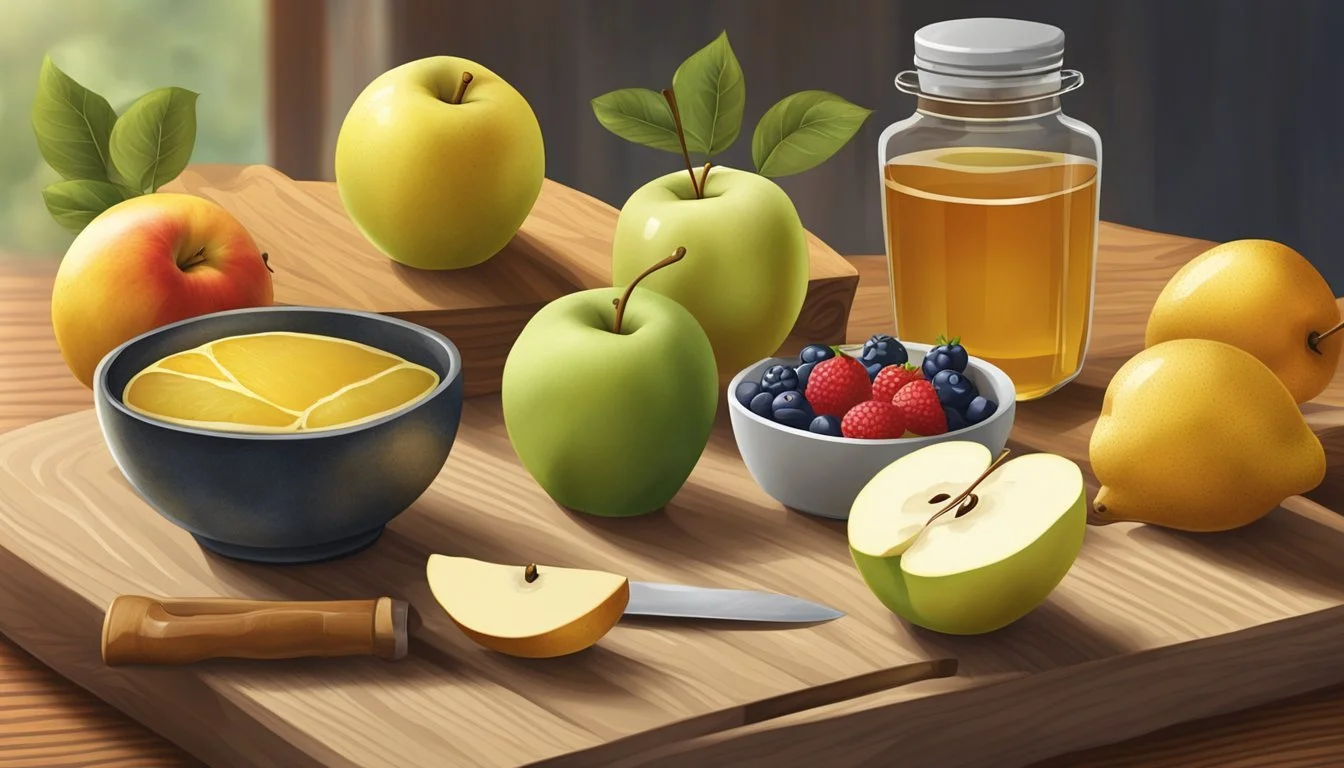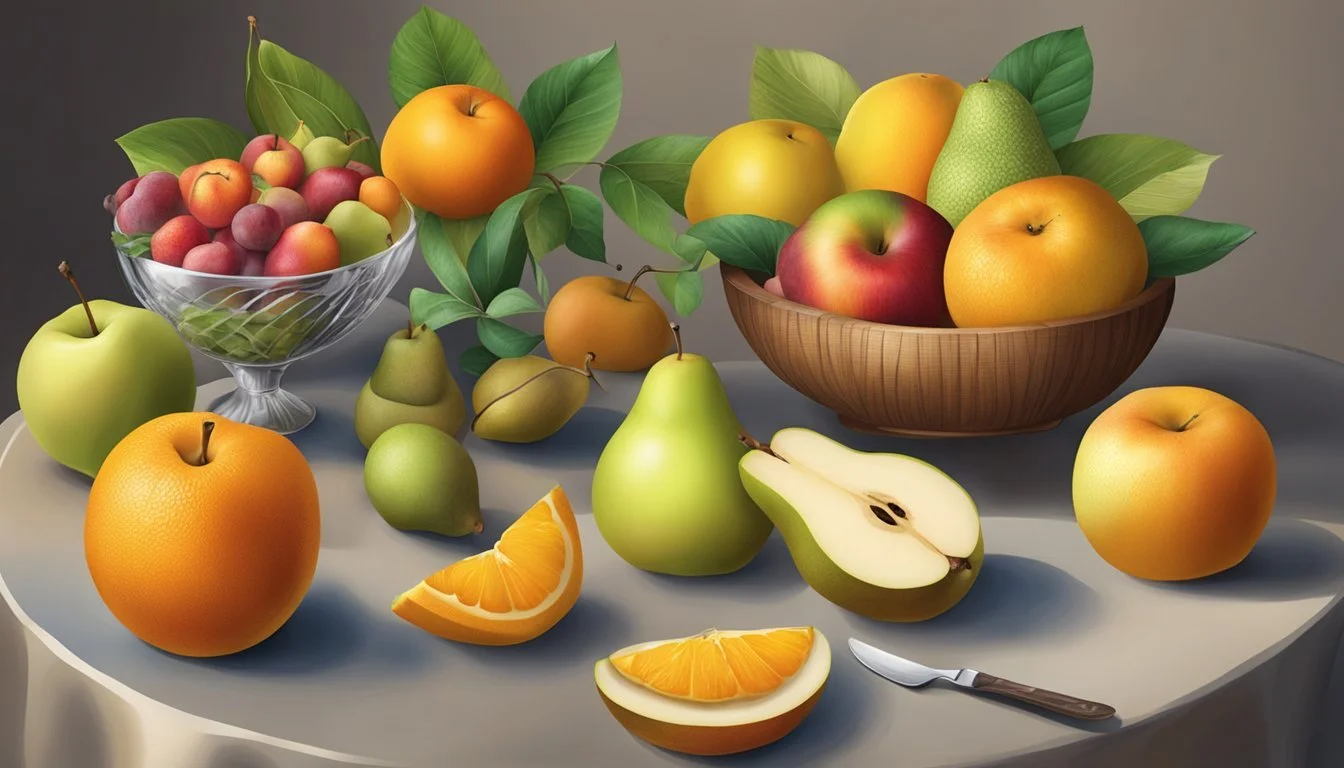Apples Substitutes
Best Alternatives for Baking and Cooking
Finding the perfect apple substitute for your cooking and baking needs can sometimes be challenging, but it doesn't need to be. Whether you're out of apples or simply looking for an alternative that caters to dietary preferences, there are many options available. Pear is an excellent substitute because of its juicy and sweet characteristics, which blend well into recipes requiring apples.
For those who prefer a tart and firm option, consider trying Bramley apples, which are often used for cooking due to their firm texture. If you find Bramley apples unavailable, choosing types like Golden Delicious or Idared can provide similar results in pies and baked dishes. When making applesauce, sweeter varieties such as Gala or Rome Beauty can be chosen to match the taste and consistency of traditional apple-based sauces.
Exploring these alternatives can open up new dimensions in your recipes and ensure that your dishes still deliver their intended flavors and textures.
Understanding Apple Varieties
Different apple varieties vary widely in sweetness, flavor, nutritional content, and texture, making them suitable for diverse culinary uses and preferences. This section outlines key aspects of various apple types.
Sweetness and Flavor Profiles
Apples come in a spectrum of sweetness and tartness. Honeycrisp apples are known for their balanced sweetness and slight tartness, making them popular for fresh eating. Granny Smith apples offer a more pronounced tart flavor, ideal for baking. McIntosh apples provide a softer sweet taste suitable for sauces and cider. Each apple’s unique flavor impacts its suitability for different recipes.
Nutritional Content
Apples are rich in nutrients such as vitamin C, dietary fiber, and potassium. Varieties like Honeycrisp and Granny Smith are notable for their high vitamin C content, which supports immune function. The dietary fiber in apples aids in digestion and helps maintain healthy blood sugar levels. The potassium in apples contributes to cardiovascular health. Additionally, apples contain antioxidants like quercetin and catechin, which offer various health benefits.
Texture Considerations
The texture of apples affects how they are used in cooking. Honeycrisp apples are revered for their crisp and juicy texture, making them great for snacking. Granny Smith apples retain their firmness when cooked, ideal for pies and tarts. McIntosh apples, with their softer texture, are perfect for making sauces and apple butter. Understanding the texture of each variety helps choose the right apple for specific culinary uses.
Fruit Substitutes for Apples in Recipes
When apples are unavailable or a different flavor is desired in recipes, several fruit alternatives can be used. Each substitute brings unique tastes and textures suitable for baking, cooking, or raw consumption.
Pears as an Alternative
Pears are a popular substitute for apples, especially in baking and compotes. They have a similar texture and can be used in pies, crisps, and muffins. Pears offer a slightly sweeter and juicier taste, making them perfect for recipes requiring a moist and tender fruit.
Pears such as Bartlett and Bosc hold their shape well during cooking. They are ideal for poached dishes and can provide a different yet pleasant texture in salads.
Using Stone Fruits
Peaches are an excellent stone fruit alternative to apples in recipes. They bring a juicy, sweet flavor, fitting well in pies and tarts. Peaches can also be used in compotes and as a poached fruit, offering a tender and flavorful option.
Plums and nectarines can be used similarly, bringing their unique taste profiles. These fruits work well in baking due to their ability to hold texture and enhance the dish's sweetness.
Tropical Fruit Options
For a more exotic flavor, tropical fruits such as mangoes and pineapples make great substitutes for apples. Mangoes add a creamy and sweet taste, suitable for desserts like pies and crisps. Pineapples offer a tangy and juicy flavor, working well in baked goods and fruit salads.
Kiwi can also be used, providing a tart and bright flavor. These fruits work particularly well in combination with other tropical ingredients for a refreshing twist.
Berry Replacements
Berries like raspberries and blueberries can be used as apple substitutes, especially in muffins and cakes. They bring a burst of flavor and color, enhancing the visual and taste appeal of the dish.
Blueberries, in particular, mimic the juiciness of apples, while raspberries add a tart twist. Their smaller size means they cook faster, making them perfect for quick-baking recipes.
Unconventional Substitutes
For those looking to experiment, bananas and quinces can be interesting substitutes. Bananas bring a soft, creamy texture along with natural sweetness, suitable for cakes and smoothies.
Quinces, however, need to be cooked to soften and bring out their unique flavor. They work well in jams, jellies, and poached dishes, providing a different yet delightful taste experience.
Using these substitutes can add a new dimension to traditional apple recipes, ensuring variety and excitement in cooking and baking.
Non-Fruit Alternatives to Apples
When looking for substitutes for apples in cooking and recipes, several non-fruit alternatives can provide similar textures and flavors. These options include various vegetables and purees that can seamlessly integrate into your dishes.
Vegetable Options
Certain vegetables can replace apples, especially in recipes where texture is essential. Jicama, a root vegetable, has a crisp texture and subtly sweet flavor, making it an excellent apple substitute in salads and raw dishes.
Cucumber can also be used, providing a refreshing crunch in fresh preparations. Though it lacks the sweetness of apples, its moisture content and mild flavor can mimic the juiciness found in apples.
Yam is another option, particularly in cooked recipes. When baked or roasted, yams offer a sweet, tender texture that can complement dishes traditionally using apples.
Purees and Sauces
Purees and sauces offer another avenue for replacing apples, especially in baking and sauces. Pumpkin puree serves as a versatile substitute, providing a smooth texture and natural sweetness that works well in pies, muffins, and cakes.
Applesauce itself is often used as an alternative to fresh apples, offering the same flavor and moisture with the convenience of a ready-made product. It works exceptionally well in baked goods and can even reduce the need for added sugars.
For a different spin, yam puree can be integrated into recipes needing a smooth and sweet component. It’s particularly useful in desserts and can add nutritional value along with its naturally sweet taste.
Adjustments in Ratios and Flavorings
When substituting apples in recipes, careful adjustments in ratios and flavorings are essential. This ensures the final product maintains the desired taste and texture without overpowering or losing key characteristics.
Sweetness Adjustments
Substituting apples with other ingredients often requires rebalancing sweetness levels. For a naturally sweet option, honey or sugar works well.
Use 1/2 cup of honey to replace 1 cup of applesauce, adjusting for the extra liquid by reducing other liquids in the recipe.
For sugar, use it in a 1:1 ratio but note that sugar won't add moisture like apples do.
Adding a bit of vanilla bean can enhance the sweetness subtly, adding depth to the flavor without altering moisture significantly.
Acidity and Tartness Balancing
Apples' natural tartness might need balancing when using substitutes. Lemon or lime juice can mimic this tart flavor.
Use 1 tablespoon of lemon or lime juice per cup of substitute to maintain the acidity apples provide.
If tartness is integral to the dish, a touch of vinegar can also be effective. For instance, 1 teaspoon of vinegar added to each cup of substitute can enhance the tartness without overpowering the other flavors.
Liquid Content Modifications
Apples contribute a certain amount of liquid to recipes, which must be considered when using substitutes.
Ingredients like plain yogurt or pureed vegetables can be thicker; thus using a 1:1 ratio and potentially adding a small amount of water can help achieve the desired consistency.
For dense substitutes like silken tofu, adjusting the ratio to 2/3 cup of substitute plus 1/3 cup water per cup of applesauce can help.
Coconut milk is another liquid-rich substitute but might require reducing other liquids to prevent the recipe from becoming too runny.
Considerations for Specific Apple Dishes
When preparing apple-based dishes, selecting the appropriate substitute for apples is crucial to maintaining the desired taste, texture, and sweetness. Below are considerations for various dishes, focusing on ideal alternatives for apple pie, apple crisp, and baked goods.
Substitutes for Apple Pie
For apple pie, pears make an excellent substitute due to their similar texture and sweetness levels. Peeled and sliced pears can mimic the softness required for an apple pie filling.
Another alternative is quinces, which have a slightly tarter flavor and firmer texture. Cooking quinces until tender will allow them to absorb spices and sweeteners effectively.
Lastly, peaches can also be used, but they add a different flavor profile, so adjust spices accordingly to match the desired taste.
Apple Crisp and Compotes
In apple crisp and compotes, plums can provide a sweet and slightly tart substitute that works well with the topping mixture. Plums soften nicely when baked, making them a close match in texture.
Berries like blueberries or raspberries can also be used. They provide a different but complementary flavor and add a vibrant color to the dish.
Consider using mangoes for a tropical twist; their juicy and sweet nature complements the crisp topping well. Adjust the sweetness level as mangoes tend to be sweeter than apples.
Baked Goods With Apple Alternatives
For muffins, bread, and other baked goods where apples add moisture and sweetness, bananas are a popular substitute. They help maintain moisture and add a naturally sweet taste.
Pumpkin puree is another option, particularly in recipes aiming for a spiced, autumnal flavor. It adds a dense, moist texture to the baked goods.
Lastly, zucchini can be used, especially in breads and muffins, to add moisture without altering the flavor significantly. It’s a great choice for those looking to reduce sugar and add a subtle vegetable note.
Purchasing and Storage Tips for Apple Substitutes
When purchasing and storing apple substitutes, it's important to consider the quality and longevity of each alternative. Proper selection and storage will ensure that your fruit substitutes are fresh and flavorful when needed.
Selecting Fruit Substitutes
When shopping for apple substitutes at grocery stores or markets, pay attention to freshness and quality. Opt for fruits like pears, persimmons, or quince, which provide similar textures and flavors to apples in various recipes.
For pears, choose ones that are firm but not hard; they should give slightly under pressure but not be mushy. Quince should be firm and yellow with a slight fragrance. Look for persimmons that are bright and free of soft spots or blemishes.
Check labels where possible, as fruits often come with guidelines on optimal ripeness. Visiting farmers' markets can also provide opportunities to ask growers about the best varieties for your needs.
Storing Alternatives Appropriately
Proper storage for apple substitutes will depend on the type of fruit. Generally, cool and dark places are best for most fruits to extend their shelf life.
Pears should be ripened at room temperature and then stored in the refrigerator for up to a week. Keep them in the produce section in paper bags to maintain freshness.
Quince can be stored in a cool, dry place and will last for several weeks. Persimmons should be kept at room temperature until they ripen, then moved to the refrigerator to preserve their freshness for up to two weeks.
Avoid overcrowding in storage areas to prevent bruising and to ensure air circulation. These steps will help you get the most out of your apple alternatives.
Integrating Apple Substitutes into Your Diet
Adding apple substitutes to your meals can boost nutritional content and diversify flavors. Options like nectarines and zucchini provide vitamins and can fit into various recipes seamlessly.
Salads and Savory Dishes
Nectarines can enhance both fruit and green salads. Their juicy texture and vitamins make them ideal for summer salads.
Zucchini or yellow summer squash can replace apples in savory dishes. When cooked with spices, these vegetables offer a similar texture and can be used in stews or sautés.
Pumpkin is another versatile option. It is high in fiber and can be baked or added to soups.
Healthy Snacking and Smoothies
For snacking, nectarine slices are a sweet, low-calorie option. They offer dietary fiber and vitamin C.
Zucchini can be used in smoothies. When paired with sweet fruits or sweeteners, it mimics the mild flavor of apples.
Adding pumpkin puree to smoothies not only thickens the drink but also provides essential vitamins and omega-3 fatty acids.
Vegetable sticks like zucchini with hummus are a healthy alternative to apple slices with peanut butter.
Conclusion
When it comes to substituting apples in recipes, a variety of options are available. Each alternative offers unique flavors and nutritional benefits that can complement your dishes.
Pumpkin is a suitable choice, boasting high fiber and vitamins. It can be added to soups, stews, and baked goods.
Nectarines are another excellent option. They are juicy, sweet, and rich in vitamin C and fiber.
For baking, Envy apples serve well, especially when raw or dried. They retain their structure and flavor under heat.
If precise measurements are needed, use equivalents such as:
Apple Measurement Equivalent 1 medium apple 3/4 cup cored, chopped apples 1 medium apple 1/2 cup mashed apples 4 pounds fresh apples 4 cups applesauce
Visit any grocery store to find these substitutes readily available. Use a food processor to easily prepare these alternatives for your preferred recipes. Whether for a savory stew or a sweet pie, these substitutes are versatile and convenient.


